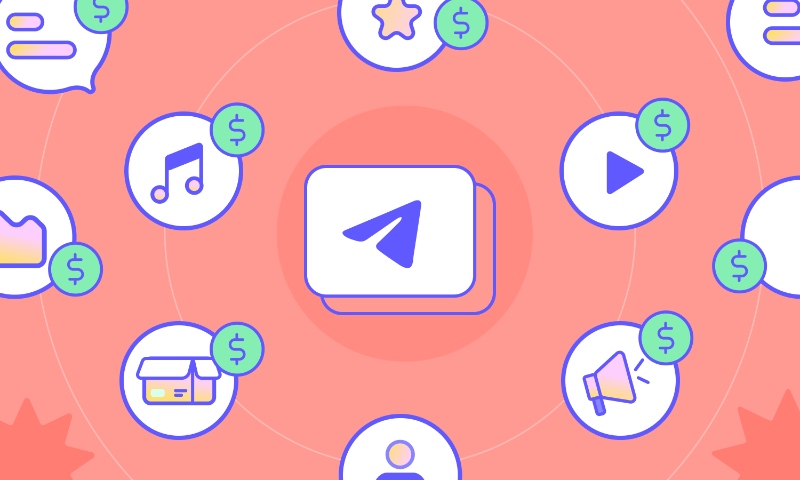In this blog, we will walk you through the basic difference between marketing and advertising for more effective planning of your online business.
Got Your Content Ready? GRAPHY is all you need to get started!
When you hear the words marketing and advertising, do you think it is the same? However, the truth is that these two concepts are completely different. Understanding the difference between marketing and advertising can help you sell more of your digital products. When you know what marketing, is and how it is different from advertising, you can eventually make more productive conversations around the topics.
Now, let us understand the topic in detail.
If you are a budding online business owner or a course creator then these key differences between marketing and advertising will help you upscale your business.
Got Your Content Ready? GRAPHY is all you need to get started!
Table of Contents
4 key differences between marketing and advertising
Now we will discuss the primary differences between marketing and advertising. By the end of this article, you’ll clearly understand the differences between marketing and advertising and how these two terms are indeed different.
Marketing vs. advertising
1) Marketing – Marketing contains all brand-building efforts that affect how the company is positioned in the market. It is how you communicate the unique benefits of your product or service through marketing campaigns, promotional channels, etc.
Adverting – Whereas advertising is a marketing tactic. You may be familiar with the 7Ps of the marketing matrix. Of these 7, advertising fits into promotion. Advertisements are paid promotions, but promotions can also contain non-paid activities, such as organic social media promotion.
Got Your Content Ready? GRAPHY is all you need to get started!
2) Marketing – Getting to know your existing customers and their relationship with your business can help your team create better campaigns and develop marketing strategies that can serve the brand as managed by your marketing team.
Advertising – Through advertising, your brand is who you are in the market. It is how you act, speak, and invite prospects into your business that makes you different from other companies. Your label is what will last in the minds of consumers.
Got Your Content Ready? GRAPHY is all you need to get started!
3) Marketing
- Managing and creating content
- Product development
- Lead generation
- New customer acquisition
- Customer retention
- Maintaining branding
- Tracking the results
Advertising
- Informing customers about the presence of your brand
- Compelling customers to buy through ads
- Drawing first-time buyers to purchase
- Keeping customers satisfied and benefiting by growing brand loyalty
- Motivating existing customers to make repetition purchases
- Keeping the brand’s image powerful
- Establishing your business
Got Your Content Ready? GRAPHY is all you need to get started!
4) Marketing – Because marketing activities include things like branding, and customer and trend research. The marketing budget as a whole may cover different roles and tools that may require to support marketing plans.
Advertising – Because advertising mostly has to do with paid ads, it’s expected to be one of the costlier marketing activities. This cost depends on who you work with to execute your advertising plans. And finally, an essential buy that goes to advertising is your actual ad spend. Each advertising platform has its own cost to put your ads on its platform.
After knowing the key differences, now we will start with some definitions.
Got Your Content Ready? GRAPHY is all you need to get started!
What is marketing?
Marketing is the ongoing process of making sure your product or service is effective to your potential market and buyers. Marketing is an involved process and it involves relationship marketing, where you have to boost your working relationship with clients and customers. You need to focus on keeping your customers loyal to your brand and being able to deliver effective after-sales nurturing and help.
One might think marketing is the broader term between the two, and advertising is a subset of marketing. But before you can consider doing anything, you’ll need to cover a lot of marketing activities, such as branding, market research, positioning, and pricing.
Here are some of the most common marketing approaches that you can use to sell courses online:
- Content marketing
- Influencer marketing
- Advertising
- Direct marketing
- SEO
- Inbound marketing
- Outbound marketing
- Email marketing
- Social media marketing
- Content marketing
- Referral marketing
- Loyalty and rewards programs
- Affiliate marketing
You have plenty of options if you want to spread the word about your digital products and grow your online business. However, you need the right strategy if you want to turn your leads into customers. To implement any of the above marketing strategies use the Graphy platform as they have multiple email marketing and content features that will help you to notify your customers when you wish to launch your online course. Email marketing is a fantastic marketing strategy for course creators.
Got Your Content Ready? GRAPHY is all you need to get started!
The marketing mix
Do you know that marketing mix was first coined by Neil Borden? According to Borden, the marketing mix is a decision-making matrix for making marketing decisions in any business.
Earlier the marketing mix was divided into the 4Ps:
Product
The product of your business addresses the specific requirements and desires of your ideal customers.
Price
How many customers will pay for your business? Price decides how profitable your business will be.
Place
Where and how your customers can access your products and services, in retail or resellers, distribution, franchising, and others.
Promotion
How your business shares the benefits and uses of your product or service.
However, the 4Ps have expanded to the 7Ps, especially for businesses that provide services.
People
Who is delivering the service of your business? Every business needs to depend on qualified, talented people to deliver services to their clients.
Process
The standard operating procedure your people follow is to show customers exactly what they receive when they buy your service.
Physical evidence
What real benefit customer receives as part of your service. For example, if you were an advertising agency, the physical evidence might be the results of the campaigns for your customers’ sales numbers.
Got Your Content Ready? GRAPHY is all you need to get started!
How marketing works
Marketing is a strategy designed to attract customers to your business and guide them through the sales funnel. For marketing, you need consumers to make contact with your business. It could be by visiting your website, following you on social media, or other touchpoints. Whatever the case, you should create many touchpoints as possible. Then track the points that prove most useful. However, the marketing process results in a sale. The lead values your content recognizes your brand and sees value in your product. You get money in exchange for the value you deliver.
But marketing doesn’t stop, your marketing strategy should also have a plan for customer retention. You want your existing customers to continue to buy from you, otherwise, you’ll have to spend more money to attract new customers again and again.
Let’s deep dive into how it works.
Market research
It is the initial and most crucial step in market research. This involves doing a basic analysis of your business, finding out the immediate competitors, identifying what problem and who is your exact ideal customer.
Identifying marketing channels
Now that you have figured out who is your ideal customer, you need to find out the best medium to find those customers. A marketing channel is a place where your customers hang out either virtual or physical.
Marketing budget
You have analyzed your market and identified the right channels for your business. But before you start with campaigns, it is very necessary to identify what are the budget limits.
Campaigning
Once you’re done with the above three steps, now design and execution of your marketing campaigns. It is a task that needs continuous monitoring as you need to change your campaign according to the need.
Before understanding the difference between the marketing and advertising process it is essential to know how marketing works.
Now, let’s understand advertising in depth.
Got Your Content Ready? GRAPHY is all you need to get started!
What is advertising?
Now that you have understood marketing in detail, let’s look at advertising in particular as it’s a subset of marketing.
Advertising is a promotional activity that seeks to sell a product or service to its target audience. However, it is one of the oldest forms of marketing. It tries to influence the actions of its target audience to either buy or sell its products. Using a positively tailored message advertisement can be niche to target audiences.
However, here are the advertising activities such as native ads, Facebook ads, and LinkedIn sponsored posts, that can help your marketing goals overall. These ads are especially for promoting your business’s offers through paid content.
Some other advertising activities include:
- Brand building to grow your business’s reputation.
- Generating more leads with new campaigns.
- Reaching more customers using social media posts.
- Underlining product or service benefits using storytelling.
Got Your Content Ready? GRAPHY is all you need to get started!
How advertising works
To set up your advertising strategy, you must identify the channels through which you’ll advertise your products. Then finally design copy and creativity to meet your specific goals. You then have to track clicks on your ad to understand whether the return on investment is worth display advertising. Always have a metric goal in mind, in case you don’t meet it, and move on to something else that might deliver better ROI.
Cognitive – awareness and knowledge
Consumers are consuming the information delivered via advertising communication. Advertising should present information on the product that helps to build interest.
Affective – liking and preference
When consumers are in the affective stage, they want to connect with the brand. Advertising should connect emotionally to retain customers.
Conative – conviction and purchase
In this stage, consumers either show intent to buy or purchase. At this stage, advertising grows into a method of the purchasing process.
Got Your Content Ready? GRAPHY is all you need to get started!
Conclusion
We hope you have learned the differences between marketing and advertising in depth. Today in the market marketing and advertising both are useful ways to sell online courses or any business.
However, have you tried any of these strategies to monetize your online course?
If you are ready, we will suggest to you how.
Graphy is your answer. It’s a full-featured platform that allows experts like you to create their course businesses from home. It also has marketing tools like a website, email marketing, and landing page templates to help you spread the word about your products and help you earn more revenue.
Got Your Content Ready? GRAPHY is all you need to get started!






